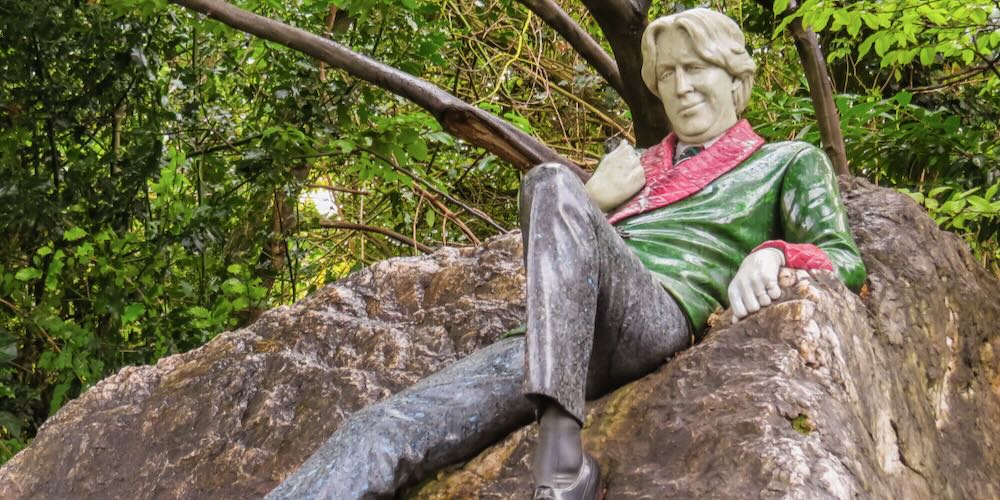One suspects true radicals wouldn’t seek out the university at all but cultivate a learning community outside of it.
Advice for Influencers
It is a truth universally acknowledged that older generations must be morally disapproving of their juniors. And, as a middle-aged matron, I am happy to do my part. It really does seem that “kids these days” are a hot mess. It’s chilling to think that they will be running the nation, right around the time that I and my peers start needing replacement knees and hips, along with reminders to take our medication.
One of the worst features of today’s kids (as every member of my generation seems to know) is their insatiable hunger for attention. They all want to be activists or “influencers.” They seem to be continually taking selfies. Their curated online images often seem to swamp all other life concerns, leaving no space for the normal, healthy activities of our youthful years, such as smoking behind the bleachers or hanging out at the mall.
Tara Isabella Burton’s newest book, Self Made, gives some insight into these shortcomings. But it also inspired me to have some compassion. Our jejune juveniles may be cringe-worthy, but they are playing an old game. They want to re-invent themselves. This pursuit has always been mesmerizing to the moderns. It was their gift, and also their curse, as older customs, class structures, and sources of authority broke down, and new opportunities for self-invention emerged. Self-Made considers the twists and turns that this effort has taken across the modern era.
It’s a strange landscape, and Burton revels in the strangeness. She introduces readers to a fantastic line-up of wacky and wicked personalities. Their stories are told in colorful detail, but somehow she still manages to keep her eye on the ball as she leads readers on this romp through Renaissance art, Enlightenment philosophy, fashion, fascism, and the advent of reality TV. It’s an entertaining journey that may leave readers unsettled at the end—because it offers no catharsis or clear resolution. Keenly conscious of both the burdens and blessings of self-invention, Burton refuses to give readers the comfort of either progressive triumphalism or traditionalist despondency. Self-invention is a dangerous game, which can easily go awry. But whether it is appealing or appalling, it is our legacy as moderns, which none of us can entirely escape. It’s hard to say who needs to hear this message more: the starry-eyed, would-be “influencers” of Generation Z, or the disgruntled elders who scorn them.
Sometimes a good book can inspire the thought, “This would make a good movie.” In the middle of Self Made, I had a slightly different revelation. “This would make a good waxworks museum.” Burton’s colorful, sometimes macabre figures seem suited to that type of presentation. In the first gallery, one could place shameless and absurd self-makers, such as Phineas Taylor Barnum, the Gilded Age shyster who exploited the human appetite for sensationalism by traveling the world with his collection of (mostly fraudulent) novelties and freaks. (Barnum knew that a sucker was born every minute, and he planned to reap the harvest.) Burton also devotes an entire chapter to the effete and somewhat ridiculous “dandies” of nineteenth-century Europe, who obsessed over their wardrobes and prized their artistic projects above all else. Oscar Wilde could stand proudly in one corner, sporting his green carnation (which he wore primarily to excite curiosity: what’s up with the green carnation?). Kim Kardashian, in all her reality-TV glory, could be the centerpiece of an ensemble including Lance Loud, the Real Housewives, and victors of Survivor.
Even those who spurn social media are forced to curate a certain image of themselves every time they apply for a job or prepare for a date. For twenty-first-century people, self-making is just part of becoming a grown-up.
Moving to a lower-lit room, we might find some crueler personalities, such as George Brummell, the impeccably fashionable gentleman who cemented his reputation by publicly humiliating England’s crown prince at a London party in 1813. Brummell slayed with words and good looks, but some of course went further: the Marquis de Sade was known for his vicious sexual exploits, while Barbara Stanwyck’s manipulative, man-eating characters drove her lovers to suicide. Contemporary self-makers often seek more radical forms of dehumanization, with a rejection of the human body. Those possibilities are explored in a chapter on transhumanism and techno-utopianism, movements that will surely continue to exert their influence in the years and decades to come.
In its very worst forms, self-making can overflow all personal boundaries, sucking whole civilizations into the maw of malevolent, power-hungry demagogues. Burton recounts the story of Gabriele D’Annunzio, the Italian poet-autocrat who conquered Fiume in a mostly bloodless, bombastic takeover in 1919. This was shortly after Versailles, when the world was too exhausted to muster much response. As Burton tells it, the military dictatorship D’Annunzio installed had more than a little of the spirit of Barnum. For him, a military “theater” was hard to distinguish from the more benign variety. But it was no laughing matter when his most inspired pupil, Benito Mussolini, plunged Italy into war with the Axis, with devastating consequences. Will Donald Trump belong in the same room as D’Annunzio and Mussolini, or can he slide in beside the housewives, with the words “You’re fired!” still on his lips? Only time will tell.
Strolling through this chamber of horrors, the visitor might reflect that any phenomenon that gave rise to Mussolini, transhumanism, and Kim Kardashian, must be very bad indeed. In light of this, it would be easy to settle into a position of firm condemnation, rejecting the modern obsession with self-making as something destructive, foolish, and perhaps even demonic. Instead of trying to self-create, we should accept the dominion of God and nature and submit to things bigger than ourselves. This is roughly the position of Carl Trueman, whose widely discussed book on The Rise and Triumph of the Modern Self documented the many evils of self-making. Trueman is especially attentive to the sexual revolution and its devastating impact on marriage and family structures. In his view, the legacy of the modern age is abortion, broken homes, and addled adolescents dressing in drag.
There is much truth in this. A fixation on self-making can nurture narcissism and megalomania, giving people plausible-sounding excuses for betraying promises and neglecting serious obligations. But Burton sees that this cannot be the whole story, because in fact, human beings are endlessly fascinating and mysterious, with awesome potentialities that too often go unexplored. The drive towards self-creation is not always a flight from God and nature. Sometimes it represents an admirable unfolding of real and remarkable abilities. Sometimes it pushes the boundaries of human excellence, to everyone’s benefit.
If Burton’s “self-maker” museum ever became a reality, it would contain another room not yet mentioned: the chamber of entrepreneurs, inventors, and up-from-bootstraps social climbers. Frederick Douglass and Abraham Lincoln would be there, reminding visitors how hard work and discipline can propel men of humble origins to greatness. Thomas Edison and Ben Franklin might stand along another wall, still advertising their brilliant blend of hard work, ingenuity, and canny self-promotion. There would, of course, be a space for Walt Whitman, Ralph Waldo Emerson, and Henry David Thoreau. Americans have ever been suspicious of aristocracy, but in our own way, we are champion self-makers.
These Americans were at the forefront of a major shift that has become especially visible over the past century: the massive democratization of self-making, which was once more clearly limited to elite social spheres. This process may have been viewed differently in the Old World and the New: European self-makers contemplated with distaste the possibility that workers, women, and the rest of the hoi polloi would end up joining them in the studio or laboratory, while Americans were more inclined to exult in (or exaggerate) the accessibility of self-creation. Regardless of the spin though, the progression was basically the same. Once, it was mainly elites who had the liberty and resources to construct a persona and lifestyle for themselves. Over time, growing prosperity liberated the masses from hard-scrabble lives dominated by drudge labor. Today, at least in the West, nearly everyone has at least some free time and expendable income, as well as significant decisions to make about their jobs, families, and preferred places to live. Even those who spurn social media are forced to curate a certain image of themselves every time they apply for a job or prepare for a date. For twenty-first-century people, self-making is not necessarily a rebellion against custom or established authority. It’s just part of becoming a grown-up.
The Judeo-Christian tradition itself, by stressing the tremendous value and uniqueness of persons, did much to lay the groundwork for the modern fixation on self.
That means there is no easy escape from the mistakes and excesses that Burton so colorfully narrates. Self-making is not safe, but neither is it avoidable; as moderns, we have no choice but to step up and make some decisions about who we wish to be. Even if we have a tradition to fall back on, it probably will not supply clear answers to every pressing question about identity and self-definition. Modern-day reactionaries (the tradwives, say, or red-pilled young bodybuilders) sometimes present themselves as non-participants in this contest of self-creation, but it is obvious to the rest of us that they are playing the same game.
Trueman (like me, and Burton) is a Christian, and would presumably recommend a return to Christian morals. That would be quite helpful for avoiding some bad mistakes, but it still would not spare us from the necessity of grappling with difficult questions about the self. Christianity is built around the teachings of a man who told his followers to “hate father, and mother, and wife, and children, and brethren, and sisters,” because “what shall it profit a man, if he shall gain the whole world, and lose his own soul?” The Judeo-Christian tradition itself, by stressing the tremendous value and uniqueness of persons, did much to lay the groundwork for the modern fixation on self.
Burton never truly answers the difficult questions that her book raises. She makes no false promises; her introduction warns readers that the narrative she offers is radically incomplete. To some extent, she concedes at the last that her tale is more cautionary than inspiring: she wants readers to understand that the moderns have erred in supposing that they can be anything they wish to be. Nature still gets her say, and human beings naturally yearn to connect with others of their kind. That requires us to get over ourselves, in the interests of love and intimacy, and also of being part of something larger and nobler than ourselves. Once we recognize this, we find ourselves back where we started: struggling to understand what it means to be human, and how we should go about doing it. Burton concludes:
We are—as Hamlet still reminds us—kings of infinite space, bounded in nutshells. We are bound to a natural world we do not fully understand, to our bodies that so often betray us, to the communities that give us language and culture and shared sense of meaning, and to the interior longings and yearnings that vex and confuse us as often as they provide us with hope, joy, and purpose. Which part or parts of that tapestry “count” as real? And which do we leave behind? And what do we lose once we do?
These are hard questions. Perhaps there is some excuse for the insecure, attention-hungry youngsters after all.



